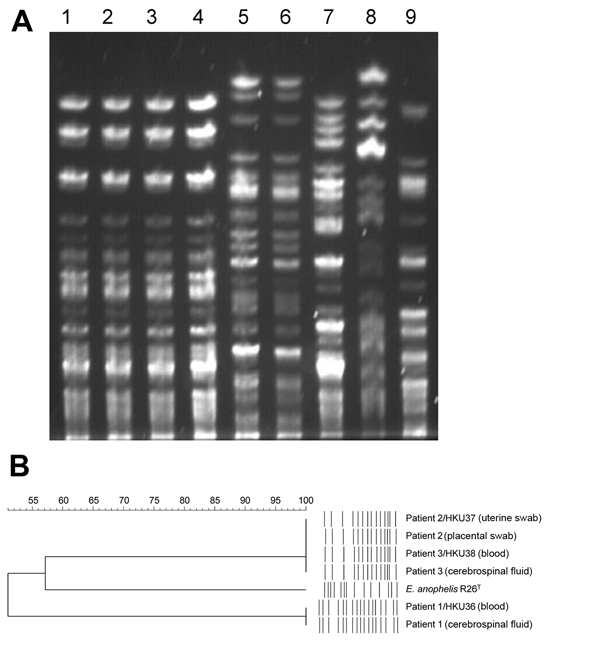Volume 21, Number 2—February 2015
Research
Evidence for Elizabethkingia anophelis Transmission from Mother to Infant, Hong Kong
Figure 4

Figure 4. Pulsed-field gel electrophoresis (PFGE) analysis of samples from patients in Hong Kong showing 3 Elizabethkingia anophelis strains compared with reference Elizabethkingia isolates. A) PFGE performed by using CHEF Mapper XA system (Bio-Rad, Hercules, CA, USA) and restriction endonuclease XbaI shows that isolates from patient 2 and patient 3 are indistinguishable, wheras isolates from patient 1 possess distinct PFGE patterns. Lane 1, E. anophelis strain HKU37 from uterine swab specimen of patient 2; lane 2, placental swab specimen from patient 2; lane 3, E. anophelis strain HKU38 from blood of patient 3; lane 4, cerebrospinal fluid from patient 3; lane 5, E. anophelis strain HKU36 from blood of patient 1; lane 6, cerebrospinal fluid from patient 1; lane 7, E. anophelis type strain R26T; lane 8, E. meningoseptica type strain ATCC 13253T; lane 9, E. miricola type strain LMG22470T. B) Dendrogram constructed with PFGE data by similarity and clustering analysis using the Dice coefficient (1% tolerance and 0.5% optimization) and the unweighted pair-group method using average linkages with GelCompar II (Applied Maths, Sint-Martens-Latem, Belgium).
1These authors contributed equally to this article.